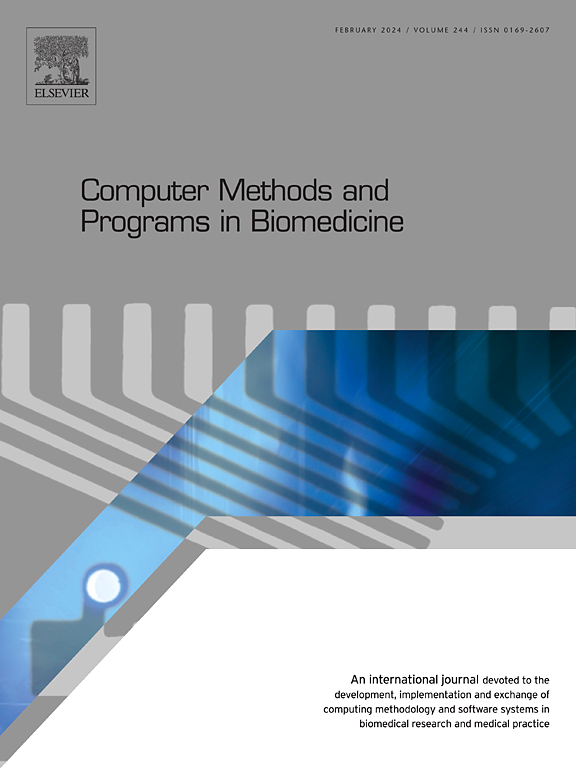Deep learning techniques for automated coronary artery segmentation and coronary artery disease detection: A systematic review of the last decade (2013-2024)
IF 4.9
2区 医学
Q1 COMPUTER SCIENCE, INTERDISCIPLINARY APPLICATIONS
引用次数: 0
Abstract
Background
Coronary artery disease (CAD) is the most common cardiovascular disease, exacting high morbidity and mortality worldwide. CAD is detected on coronary artery imaging; coronary artery segmentation (CAS) of the images is essential for coronary lesion characterization. Both CAD detection and CAS require expert input, are labor-intensive, and error-prone.
Objectives
Deep learning (DL) techniques have achieved significant success in CAS and CAD detection, with many studies published recently. This study is an up-to-date systematic review of research on automated DL models for CAS and CAD detection in the past decade (2013-2024).
Method
Using PRISMA methodology, an initial literature search of 1,589 publications was conducted, from which 97 high-impact Q1 studies were selected based on pre-defined eligibility criteria. These studies were analyzed in terms of DL techniques employed, datasets, modalities, and performance metrics.
Results
Of the 97 studies, most of which were published after 2016, 47 focused on CAS, 49 on CAD detection, and one on both tasks. CNN-based models were dominant in both domains. For CAS, CCTA was the most frequently used input modality, and U-Net was employed in 38 out of 48 studies, with recent works incorporating attention mechanisms and graph neural networks. ASOCA was the most widely used benchmark dataset. For CAD detection, ECG was the most common modality, with 45 out of 50 studies utilizing CNNs, and 20 of those relying purely on CNN architectures. Hybrid and multimodal models have become more prominent in recent years.
Conclusion
This review identified several challenges, including limited public datasets, variability in performance metrics, and model complexity. Future studies should focus on larger, diverse datasets and lightweight models integrating explainable artificial intelligence and uncertainty quantification to improve clinical applicability.
自动冠状动脉分割和冠状动脉疾病检测的深度学习技术:近十年(2013-2024)的系统回顾
背景冠状动脉疾病(CAD)是最常见的心血管疾病,在世界范围内具有很高的发病率和死亡率。冠状动脉造影检测冠心病;冠状动脉图像分割(CAS)是冠状动脉病变表征的关键。CAD检测和CAS都需要专家输入,是劳动密集型的,而且容易出错。目的深度学习(DL)技术在CAS和CAD检测中取得了显著的成功,最近发表了许多研究。本研究是对过去十年(2013-2024)用于CAS和CAD检测的自动化DL模型研究的最新系统综述。方法采用PRISMA方法,对1589篇出版物进行初步文献检索,根据预先定义的资格标准,从中选择97篇高影响力Q1研究。这些研究在DL技术、数据集、模式和性能指标方面进行了分析。在这97项研究中,大部分发表于2016年之后,其中47项关注CAS, 49项关注CAD检测,1项关注两项任务。基于cnn的模型在这两个领域都占主导地位。对于CAS来说,CCTA是最常用的输入方式,在48项研究中有38项使用了U-Net,最近的研究结合了注意机制和图神经网络。ASOCA是使用最广泛的基准数据集。对于CAD检测,ECG是最常见的模式,50项研究中有45项使用CNN,其中20项完全依赖CNN架构。近年来,混合动力和多式联运模式变得更加突出。本综述确定了几个挑战,包括有限的公共数据集、性能指标的可变性和模型复杂性。未来的研究应侧重于更大、更多样化的数据集和轻量级模型,整合可解释的人工智能和不确定性量化,以提高临床适用性。
本文章由计算机程序翻译,如有差异,请以英文原文为准。
求助全文
约1分钟内获得全文
求助全文
来源期刊

Computer methods and programs in biomedicine
工程技术-工程:生物医学
CiteScore
12.30
自引率
6.60%
发文量
601
审稿时长
135 days
期刊介绍:
To encourage the development of formal computing methods, and their application in biomedical research and medical practice, by illustration of fundamental principles in biomedical informatics research; to stimulate basic research into application software design; to report the state of research of biomedical information processing projects; to report new computer methodologies applied in biomedical areas; the eventual distribution of demonstrable software to avoid duplication of effort; to provide a forum for discussion and improvement of existing software; to optimize contact between national organizations and regional user groups by promoting an international exchange of information on formal methods, standards and software in biomedicine.
Computer Methods and Programs in Biomedicine covers computing methodology and software systems derived from computing science for implementation in all aspects of biomedical research and medical practice. It is designed to serve: biochemists; biologists; geneticists; immunologists; neuroscientists; pharmacologists; toxicologists; clinicians; epidemiologists; psychiatrists; psychologists; cardiologists; chemists; (radio)physicists; computer scientists; programmers and systems analysts; biomedical, clinical, electrical and other engineers; teachers of medical informatics and users of educational software.
 求助内容:
求助内容: 应助结果提醒方式:
应助结果提醒方式:


